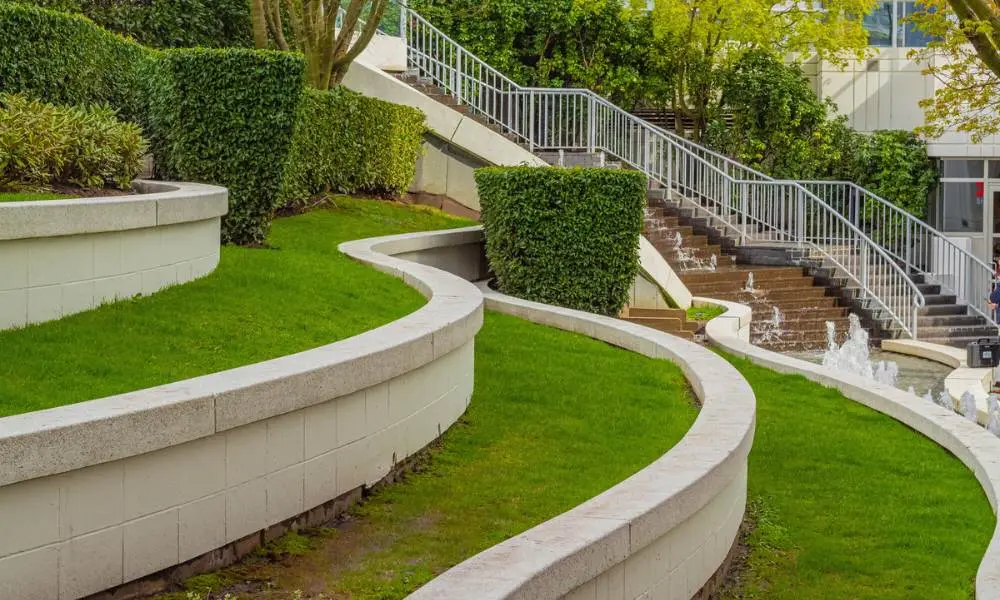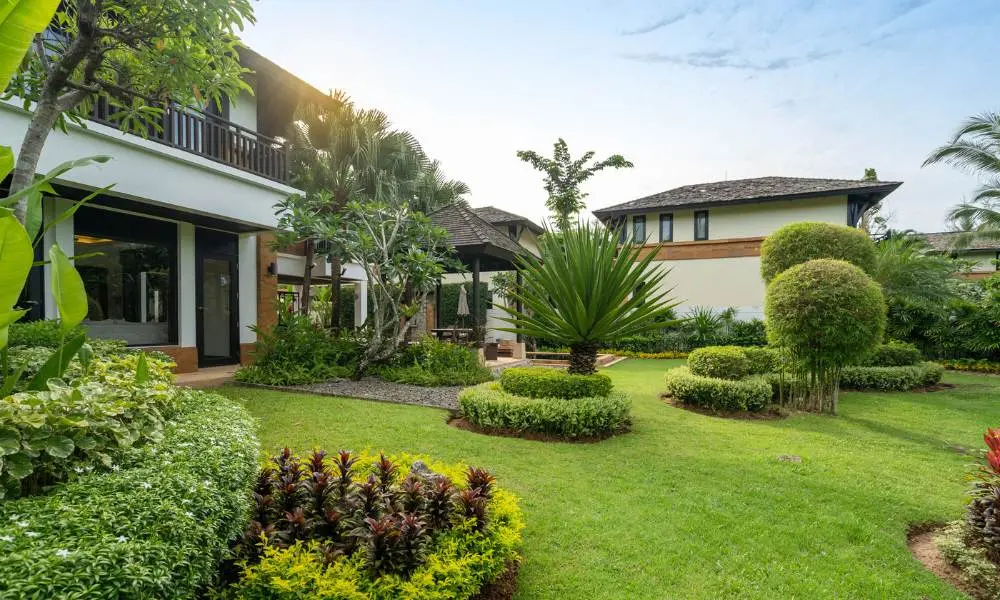Basements are prone to flooding, especially during heavy downpours. Water can seep through the walls and pool on the floor. This can also lead to cracks in the foundation and mold growth. Such a mess is a nightmare to any homeowner—repairing a water-damaged home is quite costly, not mentioning the potential health issues.
Statistics reveal that 14,000 Americans are affected by water damage every single day, implying this is a serious issue that you must pay close attention to. A major cause of water damage in homes is improper grading. This deals with how you shape the ground around your home. Ideally, the ground should slant away from your foundation to ensure no water pools around it. (1)
This article explains in-depth what grading is all about and how best to do it.

The basics of grading
As mentioned, landscape grading for drainage involves reshaping your yard’s soil to create artificial slopes. These inclines guide rainwater away from your home’s foundation. Given the crucial role these slopes play, this project is best left in the hands of experts.
Proper grading prevents pooling of water near your foundation. If you allow water to stand around just next to the walls, it can easily seep into your basement. Grading also helps prevent soil erosion. Removal of soil around the foundation can compromise its stability.
A positive slope is where the ground slopes downwards away from your house. This is what you should aim at. Contrarily, a negative slope is where the ground slants towards your house. This can lead to water pooling around the foundation, leading to water damage issues.
If you’re a victim of this, consider effective wet basement solutions like applying waterproof coatings to the walls and floors, patching cracks, installing a sump pump system, dehumidification, and proper grading around the foundation. Hire reliable providers of such solutions within your area to ensure the most successful results.
Assessing your yard’s drainage
Before you embark on reshaping your yard, you’d want to first determine the problem areas. Start with a simple visual inspection. When it rains, survey your home surroundings for pooling water and damp spots. Areas that remain wet for long after the rains need attention. Look out for eroded areas, too, where soil is visibly washing away. This indicates that water isn’t draining correctly.
If it’s dry and you intend to do grading before the rains come, you can perform a simple water test. Use your garden hose to create an artificial rainstorm, spraying water around your home, near downspouts, and in low-lying areas. Check if the water pools at any spot.
The area around the downspout is one to pay close attention to. Check where the water drains after it discharges from the roof. It should flow well away from the home’s foundation. Furthermore, inspect the ground immediately next to your house and ascertain it slopes slightly away from the walls.
Also Read: The Importance Of Proper Drainage: Preventing Water Damage In Your Home
The grading process

One question to consider is whether to tackle grading yourself or hire a professional. This depends on several factors. Firstly, how big is your yard? And how steep do you need the slopes to be? Larger areas and the need for major elevation changes may require you to hire a landscaper. Slopes around the house should be at least 0.5 inch per foot for 10 feet (2).
But for small, simple projects, you may want to do it yourself (DIY). For this, you’ll need basic tools like shovels, stakes, rakes, and a level. And you’ll have to measure slopes, mark areas, and add or remove soil. You must have enough time, physical ability, and the knowledge necessary to do the job correctly.
Hiring a professional is beneficial in the following ways:
- Expertise: Professional landscapers know the grading process in and out and how to create proper slopes for different kinds of settings.
- Specialized equipment: Professional landscapers usually possess specialized tools like grading machines that make the job easier and more efficient.
- Challenging situations: Not all landscaping jobs are straightforward. Some soil types can be tricky to manage, access to some properties may be limited, and some homes may be on steep slopes. Professional landscapers can handle such challenges.
Hiring an expert ensures your landscaping project proceeds to completion without hitches.
Drainage solutions to consider
Even after grading, you may need some additional water drainage solutions to effectively solve water issues. Below are some options to consider:
- Swales: These are shallow channels with vegetation planted in them. They’re meant to slow down the speed of runoff and direct the water to safe zones in your compound where it can’t cause havoc to the house. Aside from their drainage function, swales can be visually attractive if designed well.
- French drains: These are basically perforated pipes installed underground in trenches filled with ballast or gravel. They collect water from saturated soil and convey it to designated drainage areas. They’re especially useful in areas with heavy clay or where water tends to sit beneath the surface. French drain installation for foundations will cost you between USD$ 4,000 and USD$ 13,000, averaging at about USD$ 6,200 (3).
- Gutters and downspouts: Don’t underestimate the need for well-maintained gutters and downspouts. They help channel water off your roof and away from your foundation. Clean them regularly to promote uninhibited water flow.
You may need a combination of these drainage solutions to effectively channel away water from your home.
Long-term maintenance for optimal grading
Grading isn’t a done-and-dusted affair. You need to maintain your slopes regularly to ensure they’re in top shape for the protection of your yard. After intense rainstorms, survey your property, looking for any areas where the slope has been flawed. See if there is erosion, pooling water, or fresh damp spots near your foundation.
As time goes by, the soil may settle, creating unwanted depressions. At this juncture, it helps to add fresh soil and compact it to achieve an even slope. Below are some landscaping tips for long-term functionality.
- Choose plants with robust root systems: The extensive root network helps hold soil in place, preventing erosion.
- Opt for deep-rooted plants: Plants like alfalfa, oak trees, dandelions, and sunflowers have roots reaching several feet deep, which helps break up hard-packed soil, improving water infiltration.
- Groundcover: Raise ground cover plants in erosion-prone areas. These reduce the speed of runoff, curbing soil loss.
Proper maintenance of your slopes will ensure sustained protection against water damage.
Conclusion
Proper grading ensures water flows away from your house’s foundation, preventing costly water damage. The strategies discussed herein will help you design and build stable slopes and drainage systems.
You may need a professional site survey if you stay in an area with very flat terrain and recurrent water issues. Experienced landscapers can offer tailored advice addressing the unique needs of your home. You’d also want to consult your local building authorities in case your area has specific grading requirements or restrictions you must comply with.
Ultimately, investing in good drainage improves your yard and protects one of your biggest assets—your home.
References
- Water Damage Statistics and Information (2024). Source: https://www.thisoldhouse.com/foundations/reviews/water-damage-statistics
- Final Grade Slopes Away from Foundation. Source: https://basc.pnnl.gov/resource-guides/final-grade-slopes-away-foundation
- How Much Does A French Drain Cost In 2024? Source: https://www.forbes.com/home-improvement/plumbing/french-drain-cost/